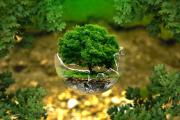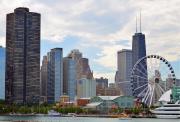Alternate Water Sources
One way to reduce treated water demand is to substitute an alternate water supply for an existing demand that does not need treated drinking water. Using stored rainwater to irrigate plants is an example of this concept. Most onsite alternate water sources in residential and non-residential settings are non-potable (unsuitable for human consumption). The most common alternate water sources are rainwater harvesting, stormwater harvesting, and graywater systems.





